
Qiantong Ancient Town – Ninghai, Ningbo, China
October 1st 2020 marked the beginning of Mid-Autumn Festival in China (the 15th day of the 8th Lunar month). For most Chinese and Expats in China, this begins a week long holiday where everyone flocks to neighbouring cities or home to see family. National Day also fell on October 1st this year, thus marking an impressive Golden Week celebration!
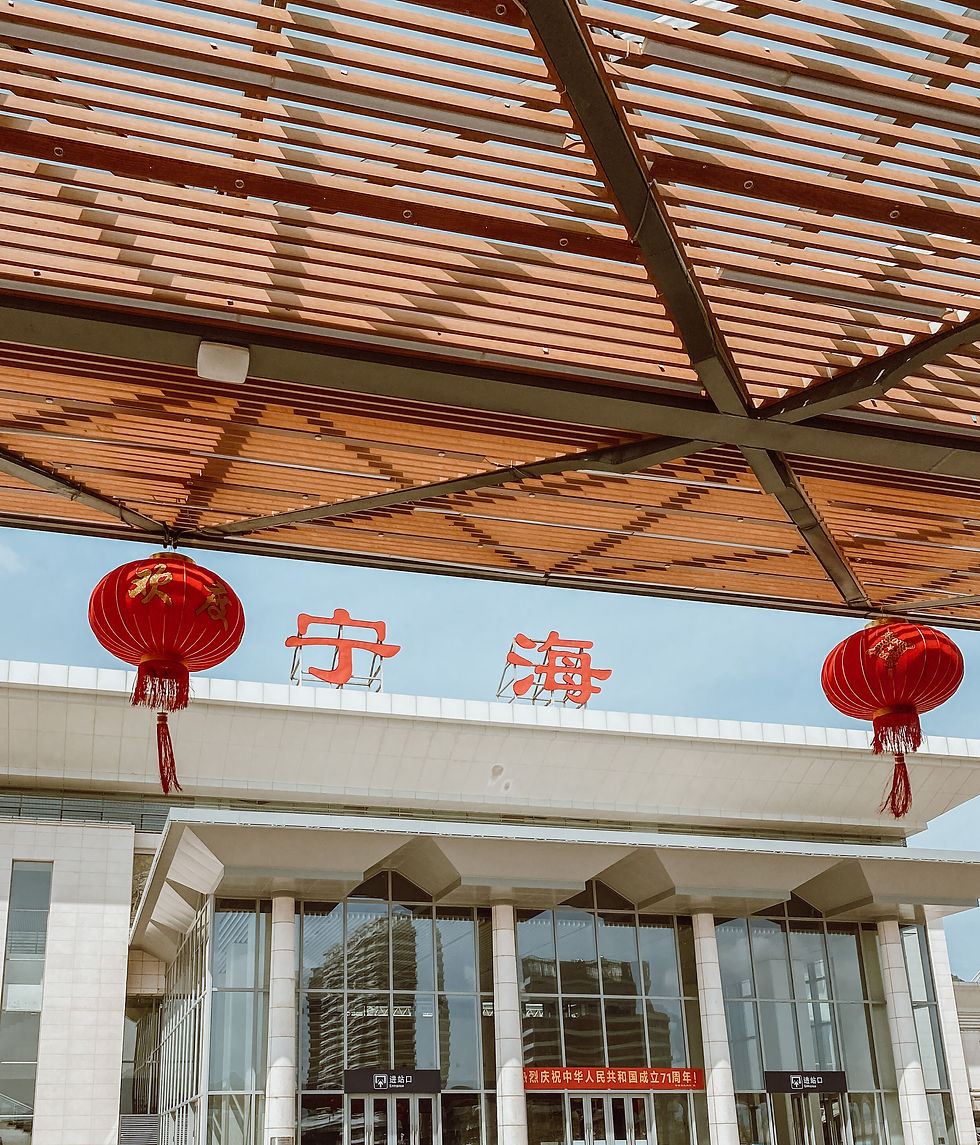
Ninghai Railway Station
Ninghai – Ninghai is roughly 30 minutes away from Ningbo by train, although it is still classified as Ningbo. Ninghai is a smaller county with a few scenic areas that should be visited. One of the most popular being Qiantong Ancient Town.
Qiantong Ancient Town – It’s an atmospheric old town, a “living” town in which 80% of the residents have the “Tong” family name. The town is generally very well preserved and it’s a joy to quietly explore the town, admiring the traditional architecture and picturesque laneways.
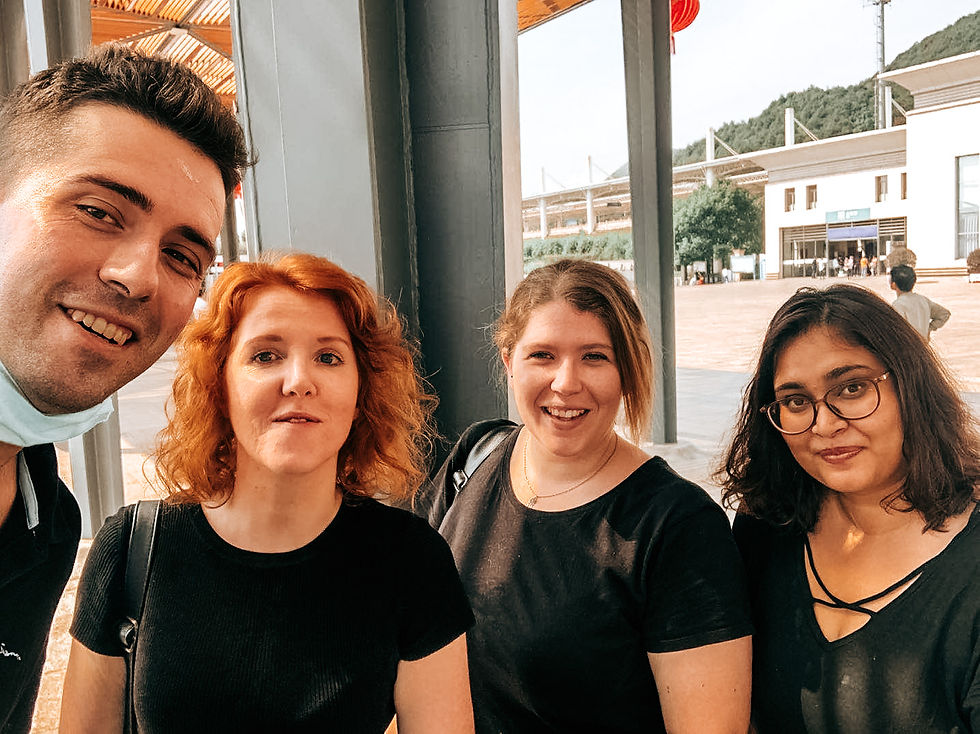
I travelled with a group of colleagues for this trip, we left Ningbo at 10am and arrived in Ninghai by 10:30. We all booked our tickets using the Trip.com app.
Once we arrived we ordered 2 DiDis (Uber in China) to take us to the old town. This cost 45RMB(£5) for each car and took around 20-25 minutes to arrive. First Mistake – we took our cars to the Ancient Town entrance, we didn’t realise that the ticket office is up a different road.
Ticket Office – The ticket office has shuttle buses between the office and the old town running regularly, this costs 5RMB(50p) one way or 10RMB(£1) both ways. We actually walked up the road, it only took around 5 minutes, to the ticket office then took the bus back down to the entrance. The ticket to the Village costs 60RMB (£6) but easily you could spend a full day here.
Map of the Village

Entrance – Guards line here to make sure rules are followed. As its a ‘living’ village, many people are just getting on with their everyday life here, including washing clothes/hands and feet in the river flowing through. As we chose to visit during Golden Week, it was incredibly busy around the village and being ‘foreigners’ obviously gathered a lot of attention here.
Getting through – Going through the village is relatively easy, paths lead onto each other and if you hit a dead end its easy enough to work out the way back to the main path. Warning – e-bikes ride through these narrow pathways the same as they do out on the roads, be careful!
Our Route – Our choice for walking through was to follow the main path way and dip into the streets off the side, some streets have Temples or Ancient Ruins others have houses where you can step into someones back garden accidentally. As this is a well known scenic area in Ningbo, people weren’t bothered by us intruding into their homes.

Locals selling items to keep tourism going here
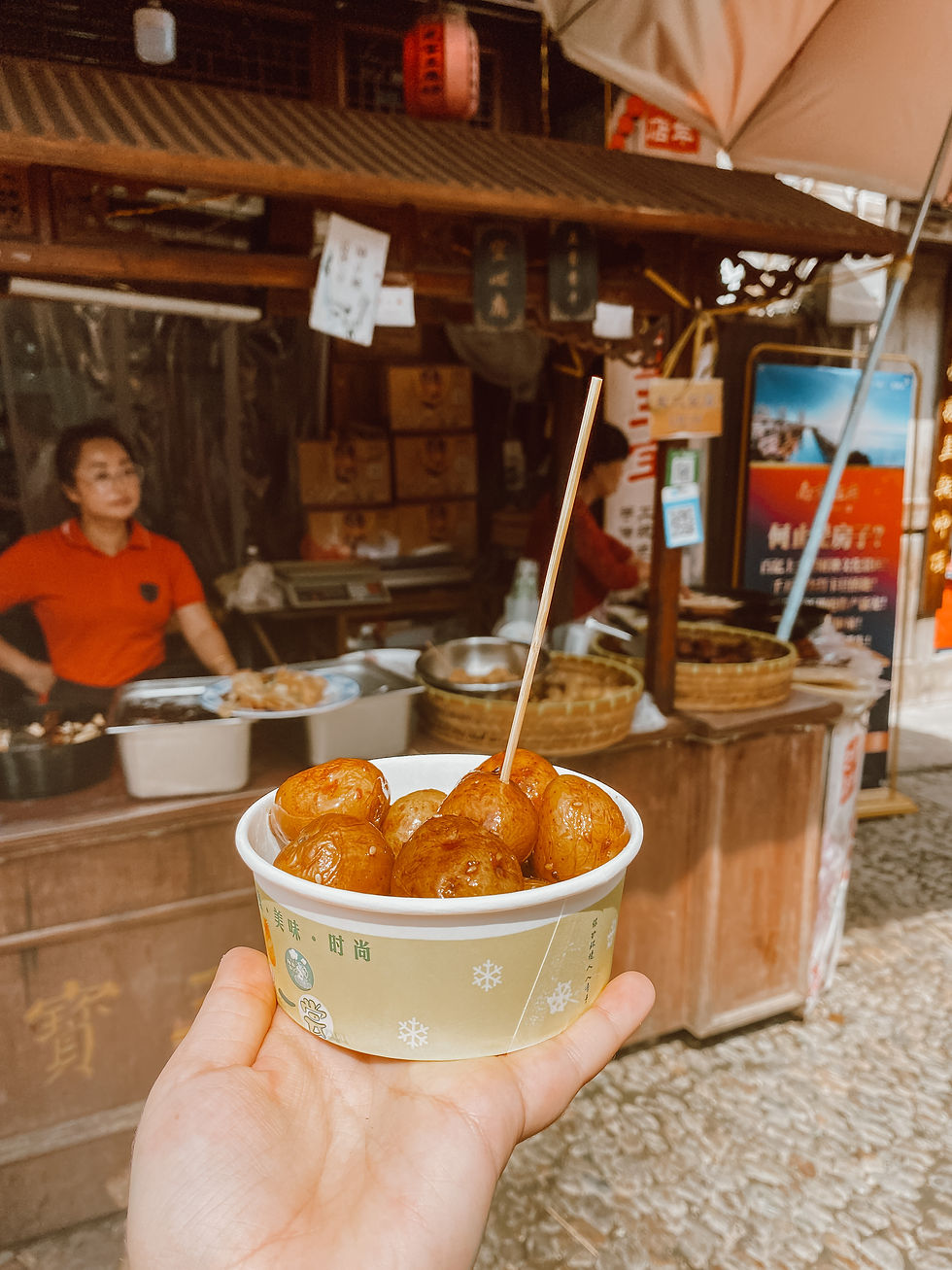
As we walked through, we felt rather tired. Even though it is October, the heat is still above 20C and with the sun blaring down it became uncomfortable quickly. Plus being so busy, we couldn’t use UV umbrellas as usual. We stopped off at a small food stand serving Tofu and Potatoes, naturally taking in the smells (luckily not stinky tofu) and tasting the free samples the vendor kept passing our way. 3 of us bought the potatoes here and they were divine! Small potatoes cooked in oils and numerous flavours to offer some slightly salty but yummy snacks.
Amazing potatoes!
Further down the path, we started to stop looking at the buildings and begin to spot typical Chinese woodwork or souvenirs. One of these small shops offered drinks and a seated area upstairs, we took this as our rest stop and enjoyed refreshments. This little shop had cute trinkets and postcards as well as authentic Ningbo creations. Also inside here lived a cat! The cat roamed free and seemingly wasn’t bothered by people, it also didn’t get too close to us so didn’t bother our allergic group member.
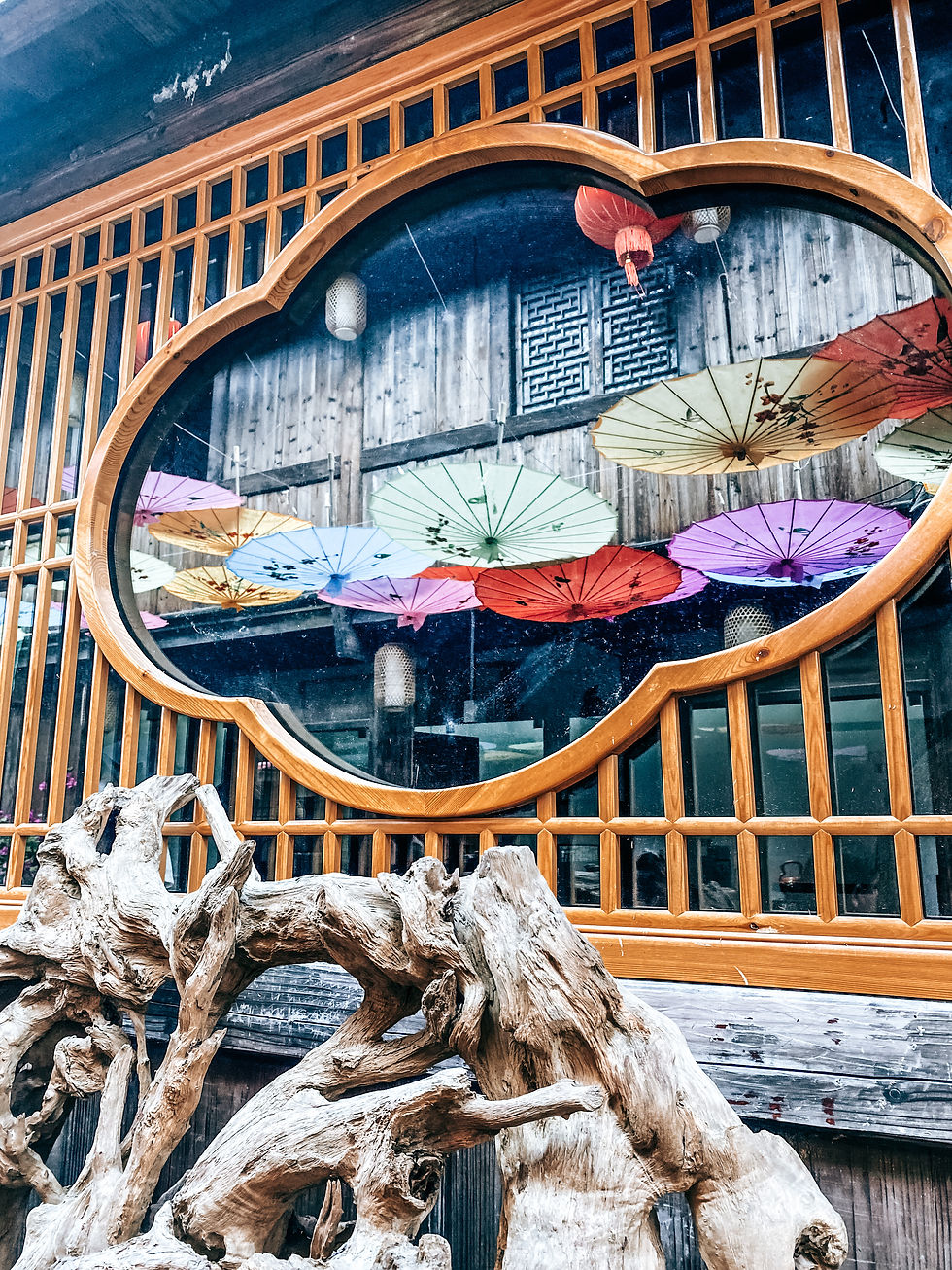
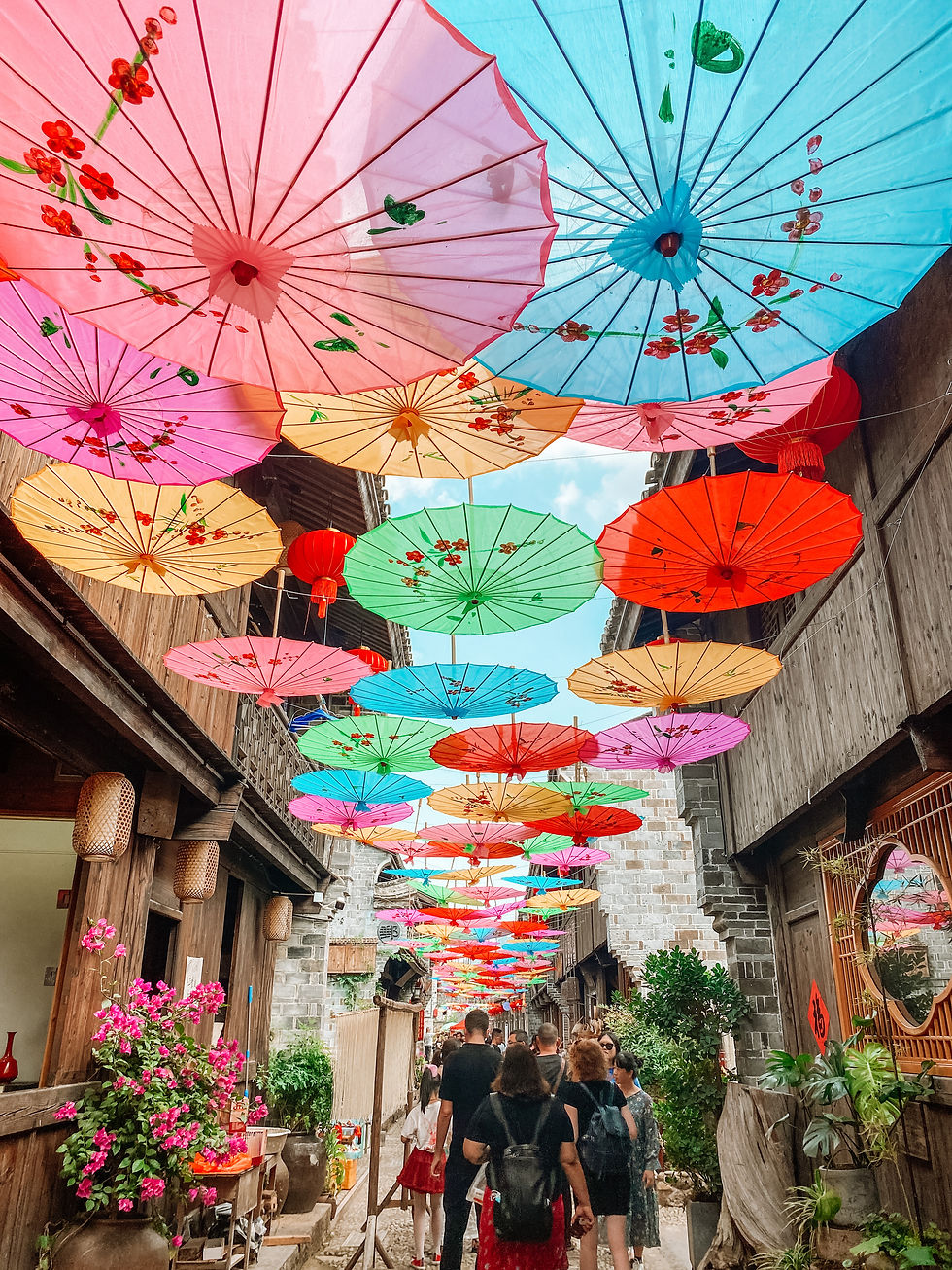
Reflection in one of the shops
Main road with the amazingly cool coffee shop
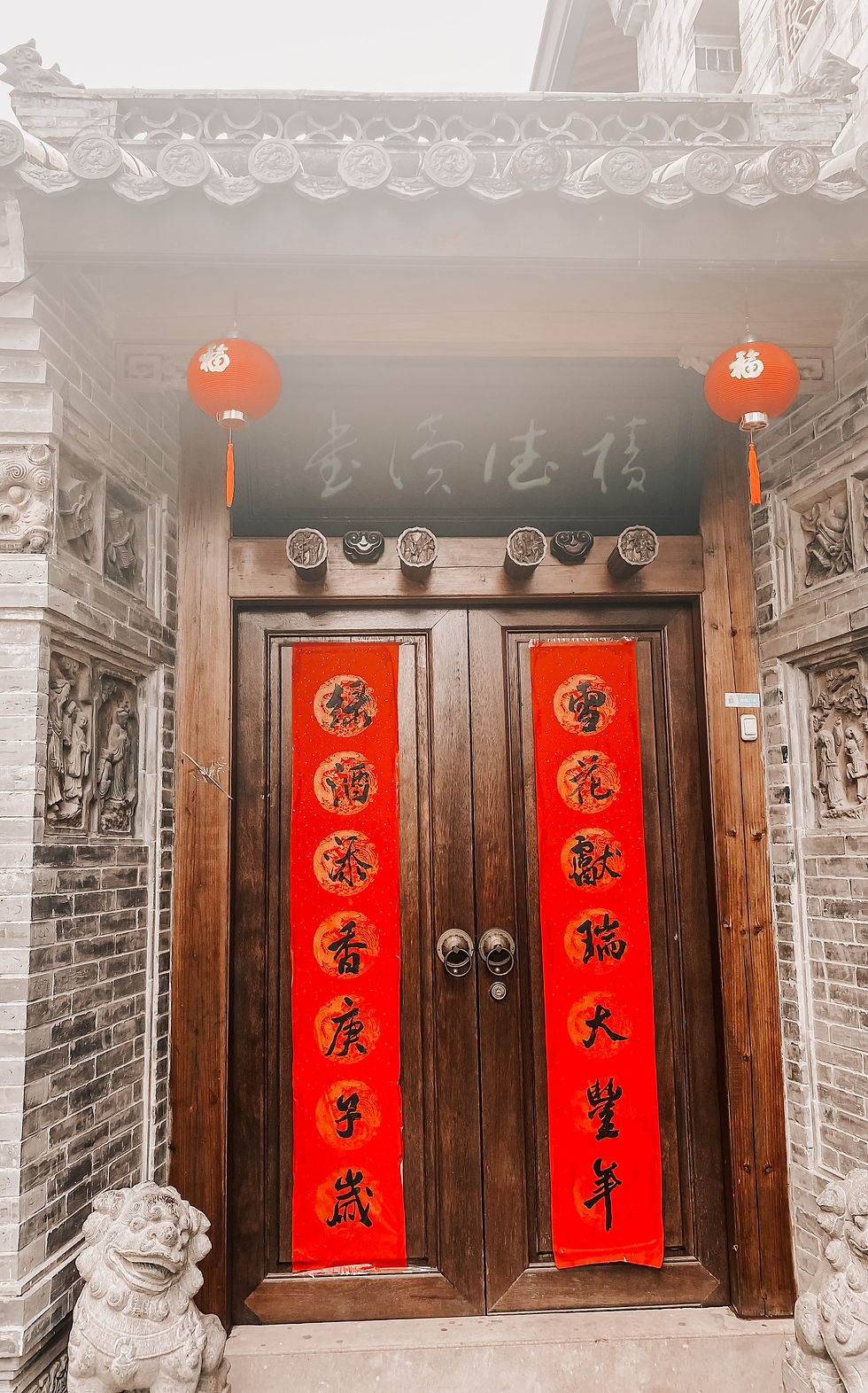
After our pit stop, we continued down the village and found another temple, where children were on stage to practice a performance. This seemed really well organised and knowing China, would have been preparation for the evening. Ningbo’s official day for National Day is October 2nd, which is the day we visited the village.
Temple doors
Next stop – We left the village area itself not too long after this. Across the street from the Entrance way is a series of steps. These steps look like nothing, but in reality they lead up a hill to an old memorial pagoda. The steps stop around halfway and the rest of the climb is a free climb over grass and overgrown grassed areas. The view from above is definitely worth it. Plus this part is free so can be seen without having to pay for the village.

Getting back – As the village was our focus, once we had finished here we travelled back to the train station to return to Ningbo. Ninghai’s train station is relatively small and a little confusing with Platform 3 accessible via Gate 1 and Platform 2 accessible via Gate 2. Boards around the station help notify you of which gate you will need.
Overall, Qiantong Village is a rich and cultured area of Ningbo that should definitely be visited by anyone in Zhejiang area. The Villagers themselves are assisted by the tourism of the area and this influences their decision to stay in the Village and keep on living their lives for us to see. Ninghai has other scenic spots that are worth checking out too but for a half day trip, Qiantong is perfect. Qiantong is also open in the evening, it could be worth sticking around to see its true beauty in the evening too.






Comments